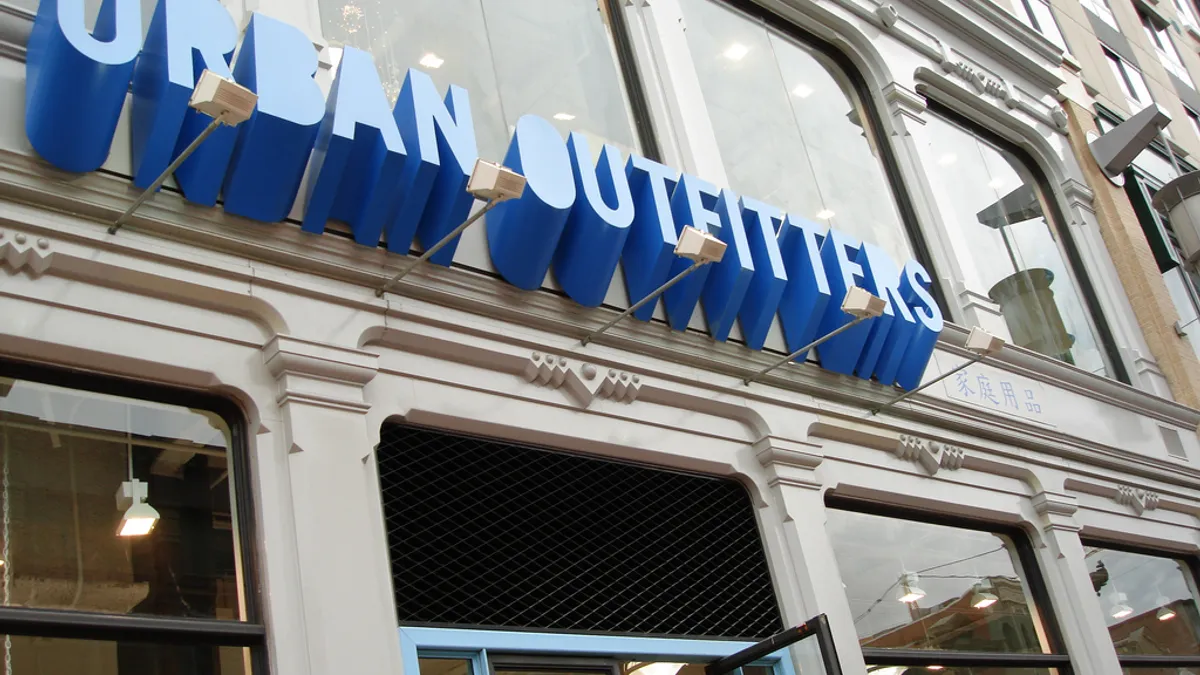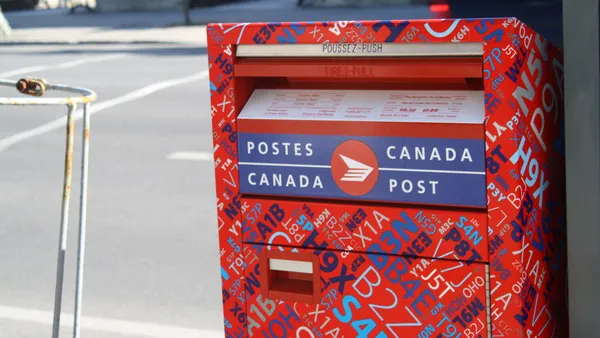Dive Brief:
- Golden gift boxes, stuffed with 70,000 signatures of people concerned about the ethical sourcing and labor practices within the garment industry, are to be delivered to fashion brands Armani, Primark, Urban Outfitters, Forever 21 and Walmart to promote minimum global supply chain transparency as a part of the #GoTransparent campaign, Clean Clothes Campaign reported.
- The five companies, considered the least transparent with their supply chain data, have refused to sign the "Apparel And Footwear Supply Chain Transparency Pledge," a minimum standards campaign assembled by Human Rights Watch, Clean Clothes Campaign and International Labor Rights Forum.
- The pledge is part of a growing trend for greater transparency in the garment industry where, in the absence of such commitment to supply chain openness, consumers should consider such secrecy a "red flag," according to Ben Vanpeperstraete of the Clean Clothes Campaign.
Dive Insight:
There are polarities when it comes to transparent supply chains.
On one side we have the often-organic, farm-to-fork movement in food services that use supply chain transparency as a competitive advantage and marketing strategy. In that business segment, direct relationships with suppliers are critical, and materials are traced back to the farm, ranch and fishing boat.
The supply chain is an active and proud contributor, and cost is usually not an issue. Their customers will pay for supply chain purity.
On the other side, we have non-transparent supply chains, where companies will not identify their suppliers. These are often highly cost-driven companies in a competitive market where every supplier relationship is critical to their success.
Protecting confidential pricing information is often the driver in purposely maintaining opaque supply chains.

Supply Chain Dive
But there may be a darker side as well, as they may be trying to hide their supply chains due to the maladies common in some low-cost country sourcing relationships.
Yet, some of the activists — and customers — who demand supply chain transparency may not be willing to pay more for products from factories that may meet their personal criteria.
These companies are caught between the proverbial rock and a hard place.
These two examples are from opposite ends of the spectrum. Let’s take a look at the typical industrial supply chain, say from the familiar widget manufacturer.
As a professional customer for many years, I can say that my suppliers were quite hesitant to identify members of their supply chains unless they needed to assign blame for late deliveries or price increases.
While some relationships may be obvious, such as a distributor buying and reselling from a certain manufacturer, other sources were often not divulged for fear of customer interference, gaining direct relationships eliminating the primary supplier, or even worse, learning the cost structure and profit margins of the tier one supplier.
Protecting confidential pricing information is often the driver in purposely maintaining opaque supply chains.
Customers will pay for supply chain purity.

Supply Chain Dive
A push for greater supply chain transparency throughout the tiers presents a contradictory situation for many prime suppliers. They understand the importance of a synchronized end-to-end supply chain, but also fear a loss of control and influence.
There is a middle ground — one based on strong relationships, trust and clear communication. It is also buyer dependent. Those dealing in a low-cost-at-all-cost environment cannot expect very much supply chain transparency.
But those buyers working in a more rational marketplace, perhaps integrating some level of social responsibility in their sourcing activities will most likely have a clearer window in the supply chain.













